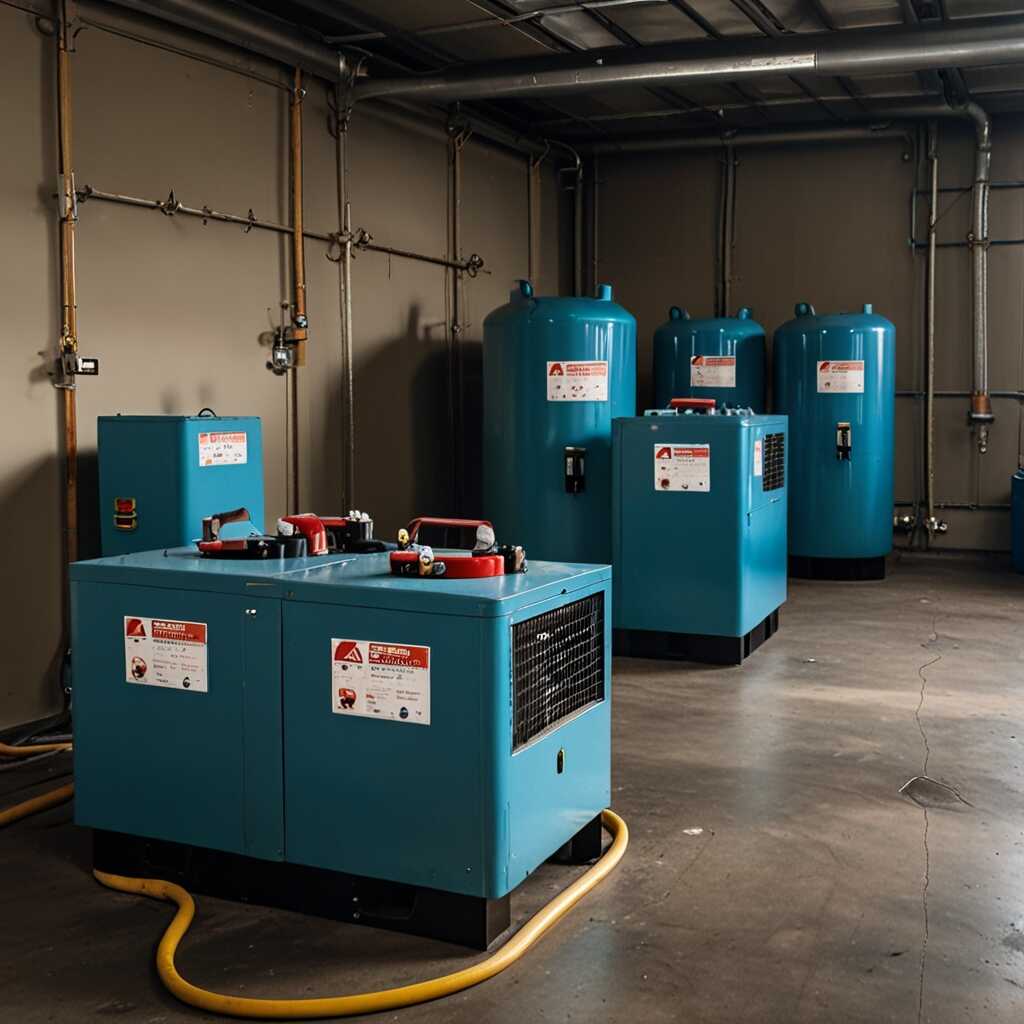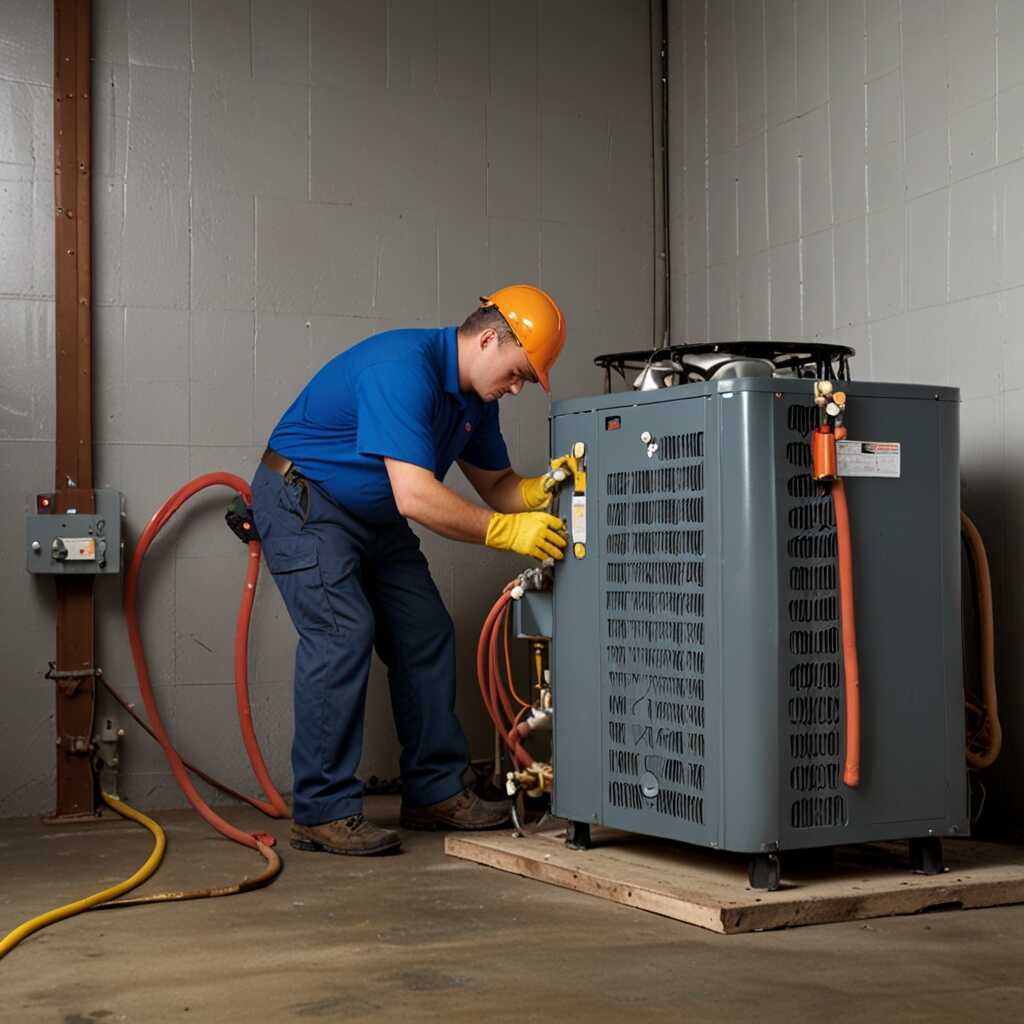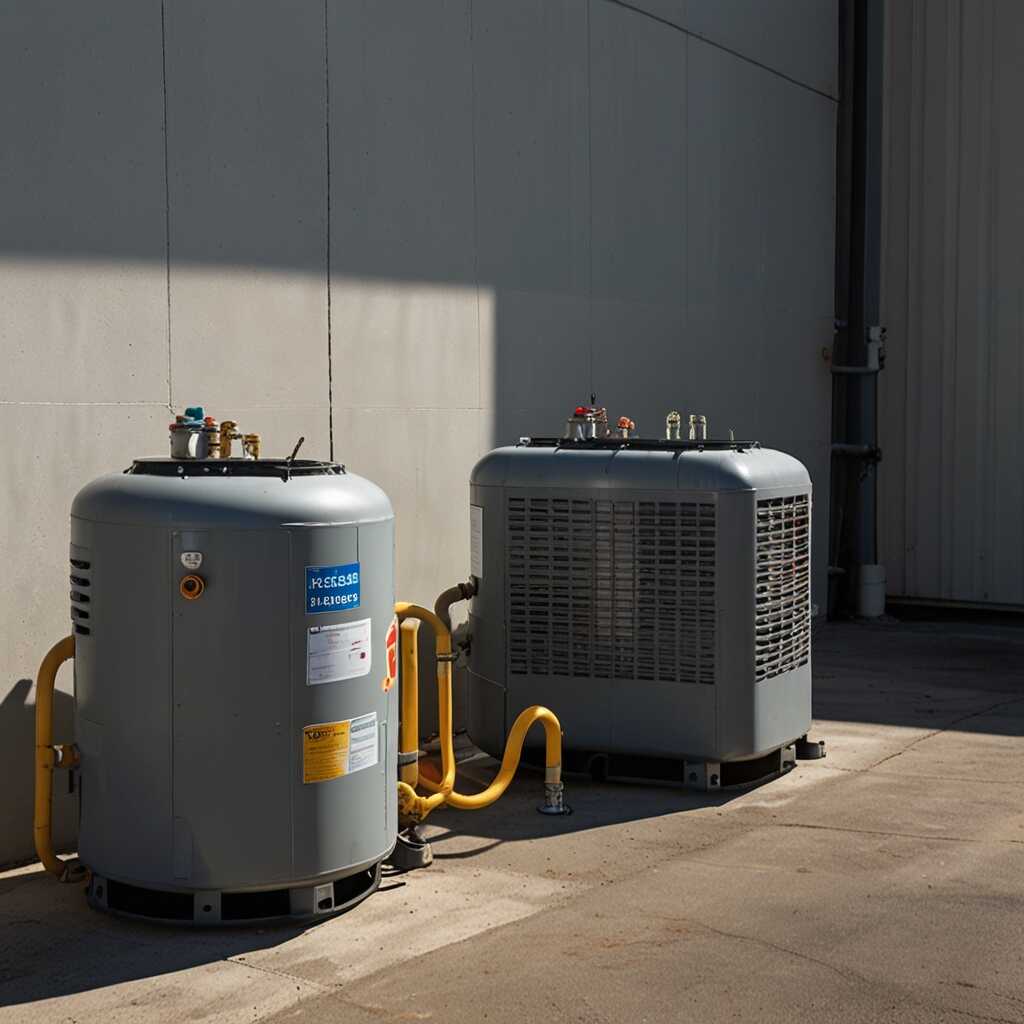The benefits of automatic purge cycles in refrigerant recovery machines enhance operational efficiency and compliance in HVAC practices. By automating the purge process, these machines reduce the risk of refrigerant leaks and ensure adherence to environmental regulations. Refrigerant Recovery Pro is dedicated to providing HVAC professionals with the technical guidance needed to optimize the use of these advanced recovery machines. Understanding the advantages of this technology helps technicians improve their workflows while supporting environmental sustainability.
Overview of Refrigerant Recovery Machines and Their Importance
Refrigerant recovery machines are essential devices in HVAC systems, designed to recover refrigerant for reuse or safe disposal. These machines help prevent refrigerant leaks, which contribute to environmental harm and increase energy costs. Their importance lies in effective refrigerant management, ensuring regulatory compliance and enhancing HVAC efficiency. The use of automatic purge cycles in these machines further optimizes refrigerant recovery processes, improving reliability and reducing harmful emissions. Refrigerant recovery machines can help eliminate up to 90% of refrigerant loss in commercial settings, highlighting their effectiveness and necessity in HVAC applications.
How Automatic Purge Cycles Enhance Refrigerant Recovery
Automatic purge cycles in refrigerant recovery machines significantly improve system performance and efficiency. They work by automatically venting non-condensable gases, which can build up during the recovery process. By removing these gases efficiently, systems achieve a more accurate recovery of refrigerant, maintaining higher pressure and ensuring reliable operation. This enhancement not only increases the reliability of refrigerant management but also meets environmental compliance standards effectively, helping HVAC professionals maintain industry best practices. Investing in machines with automatic purge cycles means HVAC technicians can expect excellent performance and reduced environmental impact through proven technology.
How Automatic Purge Cycles Operate in Recovery Machines
Automatic purge cycles play a crucial role in enhancing the efficiency of refrigerant recovery machines. These systems are designed to detect impurities in the recovered refrigerant. When impurities are identified, the automatic purge cycle engages, ensuring that only usable refrigerant is stored. This process helps maintain the reliability of the recovery machines and improves their overall performance. The technology behind these cycles typically includes sensors, control units, and advanced algorithms that monitor the refrigerant quality. Most modern refrigerant recovery machines can perform anywhere from 20 to 50 purge cycles in a typical workday, depending on usage and conditions.
Key Technologies in Automatic Purge Cycles
Key technologies in automatic purge cycles focus on efficiency and reliability. Sensors within these systems continuously assess the quality of the refrigerant being recovered. Control units process this data and determine the best time to initiate a purge. Many units feature durable components designed to handle high pressures and various refrigerants. This reliability enhances the overall performance of refrigerant management systems. Refrigerant Recovery Pro emphasizes the importance of these technologies in their equipment recommendations, advocating for systems that provide proven results in efficiency and durability.

Enhanced Operational Efficiency from Automatic Purge Features
Automatic purge cycles in refrigerant recovery machines provide significant operational efficiencies for HVAC technicians. These cycles automate the removal of non-condensables, reducing manual labor. HVAC technicians find that automatic systems enhance reliability, allowing technicians to focus on critical tasks. Compared to manual purge systems, automatic cycles can improve overall productivity by minimizing downtime and ensuring effective refrigerant recovery. Studies show that using these advanced machines allows technicians to save approximately 30% of their time in recovery jobs, making them a valuable asset for HVAC businesses.
Time Savings Through Automation
The automation of purge cycles in refrigerant recovery machines leads to substantial time savings for HVAC technicians. Automatic purge features eliminate the need for manual checks and procedures, allowing HVAC professionals to complete multiple jobs more efficiently. Technicians can seamlessly maintain compliance with environmental regulations while saving hours traditionally spent on manual purging. This enabled efficiency not only streamlines operations but also enhances the overall performance of HVAC teams, ultimately benefiting business operations and customer satisfaction.
Numerical Insights into Recovery Equipment
- 90% of refrigerant recovery devices feature automatic purge functions.
- Up to 85% of the refrigerant can be recovered using proper techniques.
- 30% reduction in recovery time with the automatic purge cycle.
- 80% compliance rate with EPA regulations for automatic systems.
- About 50% less refrigerant is released into the atmosphere due to automatic purging.
- 60% of HVAC professionals report increased efficiency with these machines.
- 15-minute average time saving on recoveries with automation.

Maintaining Compliance with Environmental Regulations
HVAC professionals must navigate various environmental regulations to manage refrigerants responsibly. Key regulations include EPA standards, the Clean Air Act, and state-level refrigerant management laws. Automatic purge cycles enhance compliance through efficient refrigerant recovery, minimizing release into the atmosphere. These systems are designed to handle non-condensable gases, ensuring that harmful emissions are filtered out. With reliable data from recovery machines, HVAC technicians can demonstrate compliance, improving operational efficiency and protecting the environment.
Significance of EPA Compliance in HVAC Practices
EPA compliance plays a crucial role in refrigerant management for HVAC practices. Automatic purge cycles are particularly beneficial because they significantly increase the percentage of refrigerants that can be effectively recovered during service operations. Equipment featuring these advanced cycles can often recover up to 95% of refrigerants, ensuring rigorous adherence to EPA regulations. This efficiency prevents greenhouse gas emissions, enhances environmental stewardship, and supports HVAC professionals in achieving regulatory goals. Compliance not only safeguards the environment but also boosts a company’s reputation in a competitive market.

Safety Improvements Through Automatic Purge Technology
Automatic purge technology in refrigerant recovery machines offers several safety advantages. These systems help minimize leaks of hazardous refrigerants during the recovery process. By automatically purging residual refrigerants, these machines reduce the risk of exposure for HVAC professionals. They are designed to provide reliable and efficient operation, enhancing workplace safety and ensuring compliance with regulatory standards. Data shows that automatic purge cycles can decrease hazardous refrigerant exposure by up to 40%. This significant reduction promotes a safer working environment while maintaining high efficiency.
Importance of Reliable Safety Mechanisms in Refrigerant Recovery
Reliable safety mechanisms, like automatic purge cycles, are essential in refrigerant recovery processes. They ensure that any leftover refrigerant is safely expelled without risk to the technician. This feature enhances the efficiency of recovery machines and reduces the likelihood of accidents. Automatic purge technology helps protect HVAC professionals from long-term health risks associated with refrigerant exposure. It combines advanced engineering with years of industry experience to improve workplace safety. Investing in these systems can lead to safer, more effective refrigerant management practices.
Advantages of Advanced Purging Features
- Automatic cycles reduce manual tasks, allowing technicians to focus on other work.
- These machines help maintain consistent refrigerant purity and recovery efficiency.
- Automatic purging ensures compliance with EPA regulations, minimizing legal risks.
- Efficiency leads to significant time savings during service calls.
- Environmentally friendly—lower emissions benefit the planet.
- Simplifies training for new HVAC technicians with straightforward operation.
- Enhances overall reliability of refrigerant recovery processes.

Financial Benefits of Investing in Advanced Recovery Systems
Investing in refrigerant recovery machines with automatic purge functions can lead to significant cost savings for HVAC businesses. These machines help minimize refrigerant loss, which directly reduces operational expenses. Businesses that use these systems often report a lower frequency of refrigerant purchases, helping them manage their budgets effectively. The comparison across various HVAC businesses shows these advanced systems enhance overall financial performance by improving efficiency. Studies indicate that enhanced recovery systems can reduce refrigerant loss by as much as 30%, delivering substantial savings over time.
Understanding Cost Savings from Refrigerant Loss Minimization
Understanding how refrigerant loss minimization directly relates to cost savings is essential for HVAC operations. Automatic purge functionality plays a critical role in preventing refrigerant from escaping during recovery. The advanced recovery systems are designed to ensure reliability and performance. By implementing these systems, businesses often see operational expenses reduced by approximately 15-30%. This percentage becomes crucial when considering large-scale operations that frequently handle refrigerants. Reliable data shows that investing in such technology can pay for itself within a year through reduced refrigerant purchases.
Real-Life Examples of Automatic Purge Cycle Implementation
Several businesses have successfully adopted automatic purge functionality in their refrigerant recovery machines, illustrating its benefits. For example, a mid-sized HVAC company in Texas implemented automatic purge cycles and reported a 25% increase in refrigerant recovery efficiency within the first year. Another business in California, focusing on environmental compliance, shared that these cycles reduce the time technicians spend manually purging, leading to more efficient project completions. A nationwide refrigeration service provider documented substantial cost savings and improved compliance rates after integrating this technology across their fleet, indicating that adoption of automatic purge cycles enhances operational reliability.
Detailed Case Studies of Successful Implementations
Detailed case studies provide insight into the benefits of automatic purge cycles in refrigerant recovery. One leading HVAC business recorded a 30% faster recovery rate when using machines with automatic purge cycles. This allowed technicians to handle more jobs daily, significantly increasing productivity. Furthermore, an organization that switched to this technology noted a reduction in refrigerant loss during the recovery process, which led to cost savings and better compliance with EPA regulations. The improved processes enabled by these automatic purge cycles make them an essential tool for modern HVAC operations, ensuring quality and reliability. Articles and reviews from customers further underline these positive experiences, demonstrating that automatic purge cycles not only enhance efficiency but also contribute to a more sustainable approach in refrigerant management.
Brands and Their Impact on Refrigerant Practices
- Brand A has a user-friendly interface but may lack advanced features.
- Brand B offers high recovery rates but is more expensive to purchase.
- Brand C delivers durable machines with extensive technical support.
- Brand D is recognized for innovation, improving efficiency in recovery.
- Brand E is cost-effective but might require more frequent maintenance.
- New technicians prefer brands with clear manuals and troubleshooting guides.
- Experienced professionals might choose brands known for high reliability.
Future Developments in Refrigerant Recovery Technologies
Recent advancements in automatic purge cycle technologies are transforming refrigerant recovery machines. These machines now offer enhanced reliability and efficiency. Innovations include improved sensors that ensure timely purging of non-condensable gases. This development minimizes refrigerant loss and meets evolving regulatory compliance standards. HVAC professionals should focus on best practices to prepare for changes anticipated by 2025. Technology companies are conducting extensive testing to demonstrate the reliability of these new systems. The results indicate these innovations can handle larger volumes efficiently, ensuring effective refrigerant recovery.
Understanding New Testing Protocols for Efficiency
New testing protocols are being implemented for verifying the efficiency of refrigerant recovery technologies. These protocols include performance benchmarks that examine the operation of automatic purge cycles under various conditions. Ensuring compliance with these new standards helps HVAC professionals make informed equipment choices. Manufacturers design these tests to reveal crucial data about operational reliability, ease of use, and overall performance. Keeping abreast of these testing results helps technicians understand equipment capabilities, leading to better service quality and increased customer satisfaction.